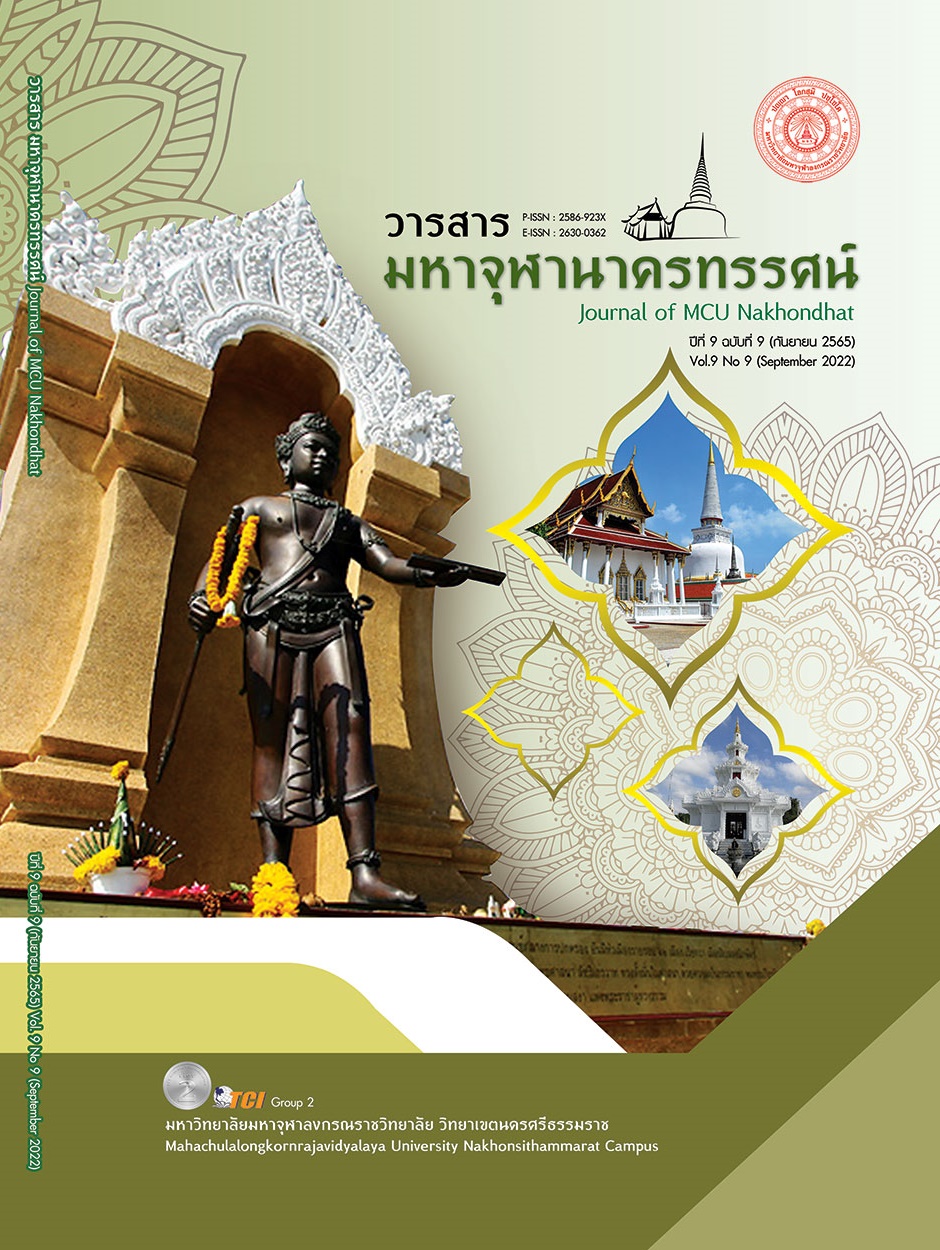THE PRACTICAL MODEL OF BODHISATTVA L AITY IN MAHAYANA BUDDHISM
Main Article Content
Abstract
The objectives of this research article were to: 1) study meanings, objectives, development, ideas and influences of layman Bodhisattva in Mahayana Buddhism, 2) study the practical guidelines of layman Bodhisattva in Mahayana Buddhism, and 3) to propose the model of practical guidelines of layman Bodhisattva in Mahayana Buddhism. This research employed the qualitative research methodology done by studying documents Chinese version of Mahayana Tipiṭaka including other related documents and then the analysis of collected data was done to meet the expected relevance. In the research, it was found that the practices of layman Bodhisattva imply laity’s practices which might be developed at the time of the development of Mahayana Buddhism where its roles, preservations, propagations and protections of Buddhism are followed while living household life. It was also found by a researcher that the two types of practical guidelines were already laid down in Mahayana Buddhist scriptures as follows: 1) the principles of Dhamma which are relevant to layman Bodhisattva’s practices, Bodhisattvacariyã, and 2) following threefold training and Bodhisattvasĩla by which the precept is chosen to observe in accordance with one’s ways of living life. Then, the practical model accorded with layman Bodhisattva could be observed through seven steps: 1) realization of the practical guidelines, 2) motivation to enter the practical processes, 3) making decision while choosing the given guidelines, 4) initiating the practical processes, 5) moving on the practical guidelines, 6) building up the internal and external attributes, and 7) sustaining its move on the practical guidelines of layman Bodhisattva. By virtue of these, layman Bodhisattva is required to be prepared by both worldly and supramundane matters through learning, working and living life by means of four requisites whereby he could behave toward family and society in accordance with Dhamma and Vinaya of Bodhisattva’s ways of life with a view to providing the great deal of benefit to oneself and others whereby all goodness could be solely dedicated to the goal of enlightenment.
Article Details

This work is licensed under a Creative Commons Attribution-NonCommercial-NoDerivatives 4.0 International License.
References
ชะเอม แก้วคล้าย. (2547). สัทธรรมปุณฑริกสูตร. กรุงเทพมหานคร: อมรินทร์พริ้นติ้งแอนด์พับลิชชิ่ง.
พระพรหมบัณฑิต. (2561). พระไตรปิฎกฉบับสากล : วิถีธรรมจากพุทธปัญญา. พระนครศรีอยุธยา: มหาวิทยาลัยมหาจุฬาลงกรณราชวิทยาลัย.
วศิน อินทสระ. (2550). พุทธปรัชญามหายาน. กรุงเทพมหานคร: เม็ดทราย.
สุชาติ หงษา ดร. (2550). ประวัติศาสตร์พระพุทธศาสนา. กรุงเทพมหานคร: ศยาม.
เสถียรโพธินันทะ. (2544). วิมลเกียรตินิทเทสสูตร. (พิมพ์ครั้งที่ 4). กรุงเทพมหานคร: มหามกุฏราชวิทยาลัย.
佛陀教育基金会. (2555). 《佛学大辞典》. 台北: 财团法人佛陀教育基金会.
日本东京大藏经刊行会. (1998). 大正新修大藏经. 台北: 世桦印刷企业 有限公司.
星云大师. (1995). 《人间佛教. 高雄: 佛光山.
普慧莲社. (1981). 《授三归五戒八戒正范》. 香港: 普慧莲社.
杰操大师. (2002). 《入菩萨行论广解》. 台北: 大千.
林国营. (2550). 佛学大辞典. 台北. 台北: 财團法人佛陀教育基金会.
萧振士. (2017). 《六祖坛经轻松读. 新北: 大喜文化.
越南佛学明月居士林. (2054). 授据家二众三归五戒正范合本. 越南: 华侨印刷公司.
释印顺. (2011). 《初期大乘佛教之起源与开展》. 北京: 中华书局.


